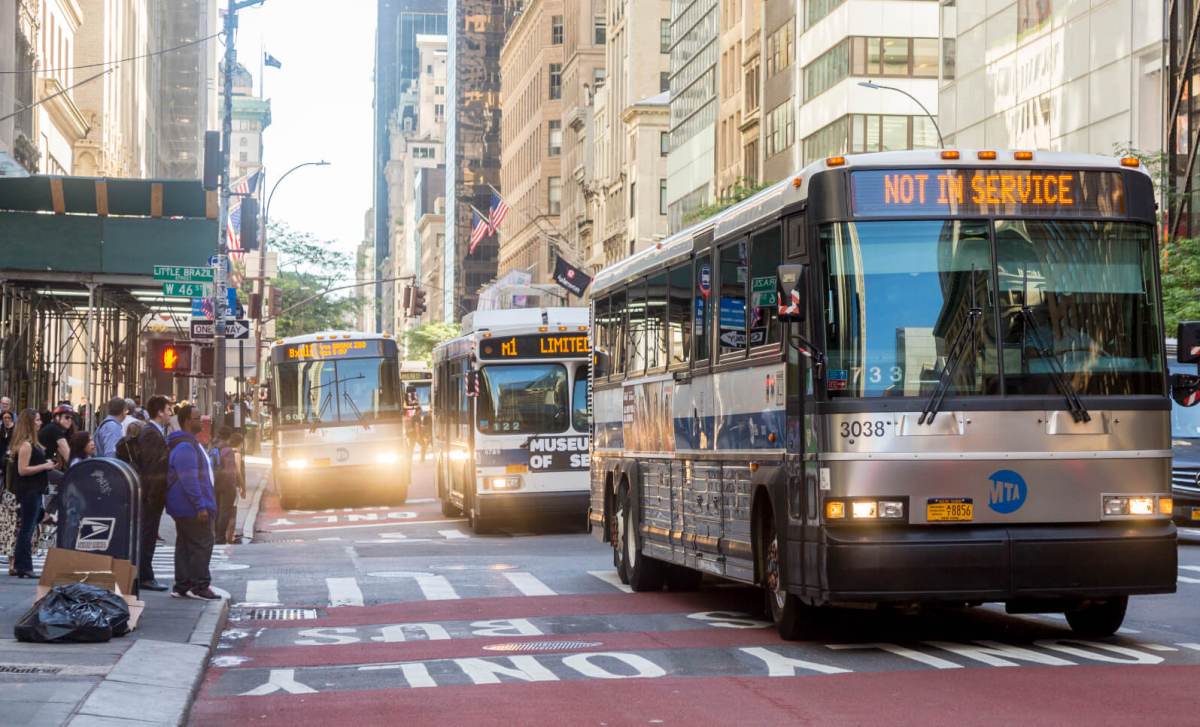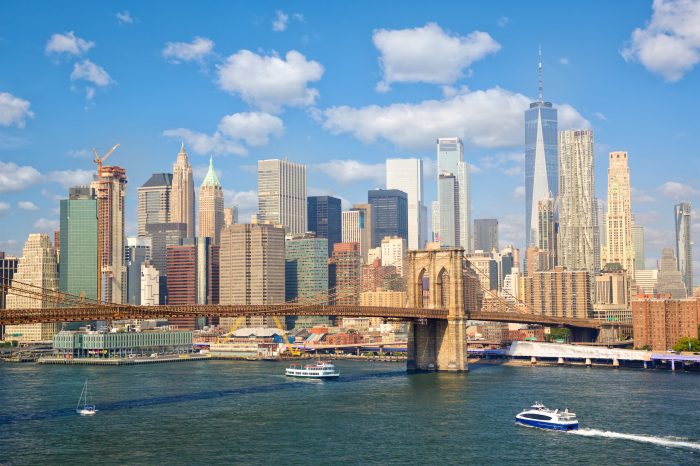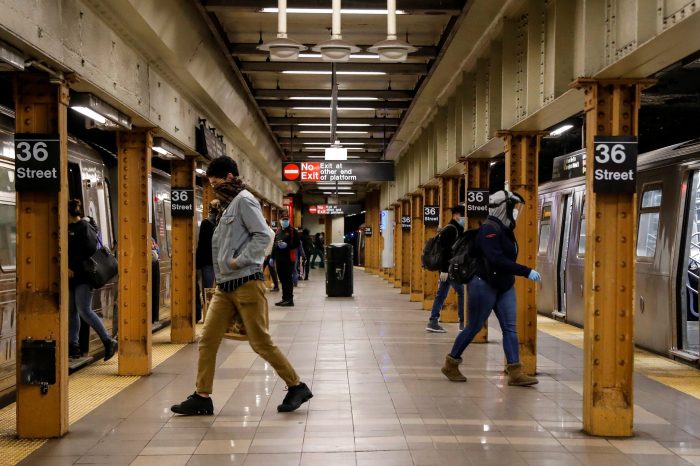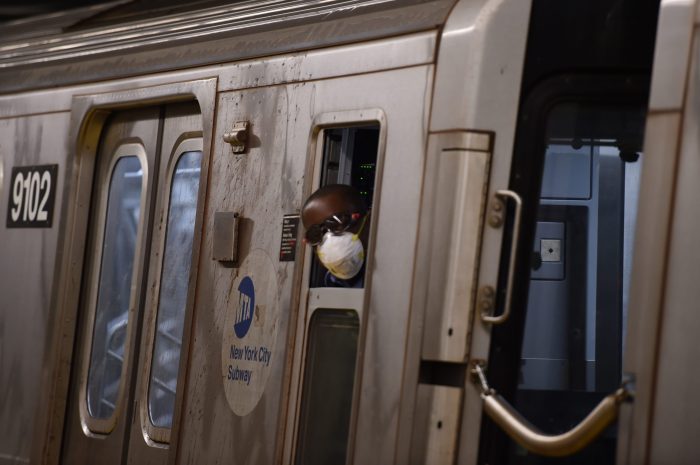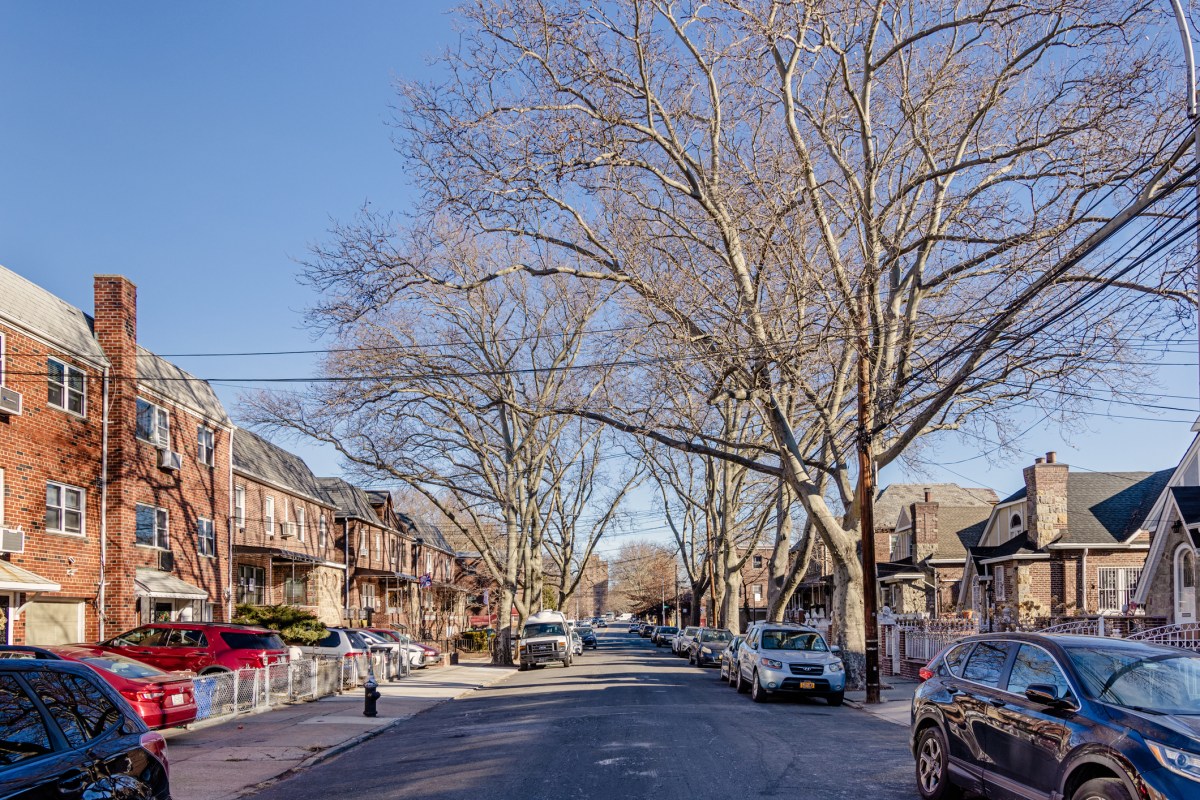City street designers quietly watered down their own traffic restrictions for the long-delayed Fifth Avenue busway after pushback from moneyed businesses along the upscale Midtown corridor.
The Department of Transportation wants to still allow through traffic for private vehicles on almost all of the busway from 57th Street to 34th Street, rather than direct cars off at the first available turn to free up congestion for buses, according to a July 29 presentation to local groups and businesses known as the Community Advisory Board.
“It’s disappointing that the proposal was diluted from the original,” Danny Pearlstein, a spokesman for the transit advocacy group Riders Alliance, told amNewYork Metro. “There are uniquely powerful business interests at play here, but I don’t think there’s a unique justification for the change.”
DOT’s revised scheme splits the prominent corridor into two sections, a 10-block stretch allowing through traffic from 55th to 45th streets, and undoing all restrictions for those going south of 45th Street, according to the presentation.
The city at first wanted to ban private vehicles from driving through the entire 23-block section of the Fifth Avenue busway, while still allowing local access via side streets requiring drivers to take the next available turn.
That mirrors the much-hailed 14th Street busway which officials have credited with dramatically speeding up buses along that downtown roadway.
Drivers now will have to turn off only at 55th Street and those on the 10-block stretch below have to leave the busway by 45th Street.
Turns will be banned at 51st, 49th, and 47th streets, consistent with holiday season restrictions on the avenue, which DOT says will reduce conflicts between cars crossing over the existing two lanes of red bus lanes, while also improving safety for pedestrians at the busy intersections.
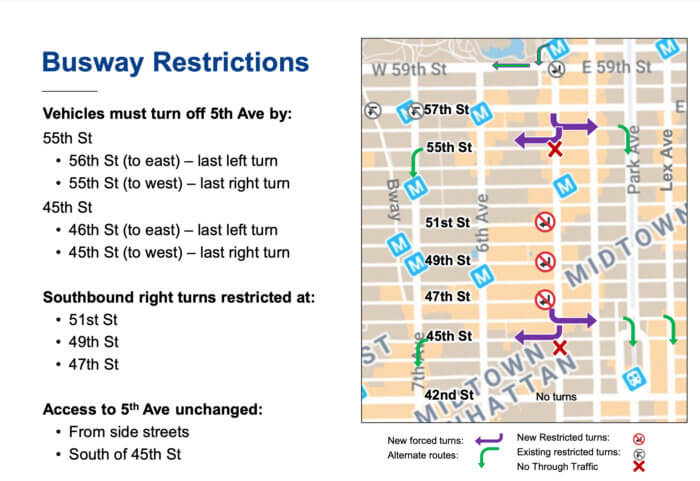
One of the new benefits that the updated plan lists is that it “maintains more vehicular access along Fifth Avenue” — seemingly running counter to the whole idea of a busway to divert most car travel.
The Fifth Avenue project is the last of five new busways Mayor Bill de Blasio announced in June 2020 to help the city’s notoriously-slow buses, and DOT officials say the restrictions on other busways and bus lanes have boosted speeds by about 30%.
The Midtown proposal also includes a new protected bike lane and an expanded painted sidewalk between 59th Street and 34th Street, which DOT still plans to install in August.
But the busway scheme was set back repeatedly after resistance from local neighborhood and businesses groups, who claimed restricting car traffic through Fifth Avenue would hamper the recovery for business along the ritzy avenue, which is home to luxury hotels and expensive goods purveyors like Bulgari, Prada, Gucci, and Dolce and Gabbana, reported Streetsblog.
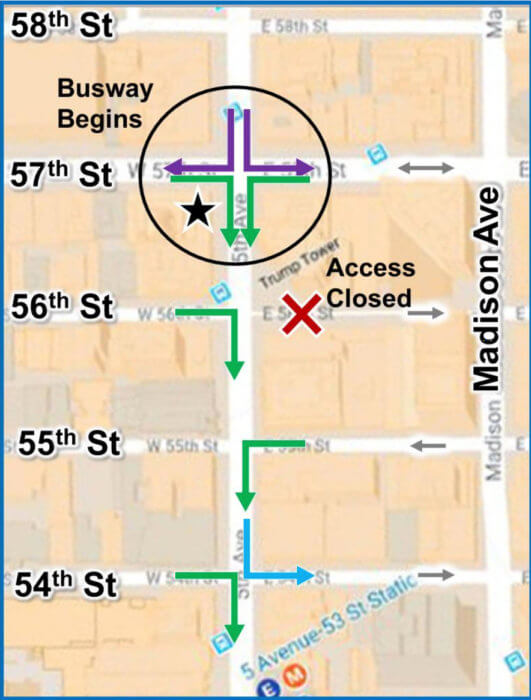
Pearlstein said the mayor should use the successful data of other busways to not back down and provide a benefit for the 110,000 daily bus riders on 41 routes that Fifth Avenue served pre-pandemic, who tend to be lower-income New Yorkers of color.
“Faster bus trips is one of the most transformative changes mayors can make,” the advocate said. “Mayor should have the courage of using the data to back them up.”
The mayor’s office referred a request for comment back to DOT.
The head of the Fifth Avenue Association, which advocates for businesses along the corridor, opposed DOT’s original plans, saying they should go even further and still allow through traffic on all of the roadway, and instead focus on enforcing the existing bus lanes and maybe eliminate some turns.
“They should go further in altering the proposal to maintain through car traffic on Fifth Avenue, which we believe is possible while still attaining their goals of increasing bus speeds and making the avenue a better place for all users,” Jerome Barth told amNewYork Metro.
When asked about the city putting well-heeled New Yorkers and visitors before lower-income public transit users, Barth said that many of the working-class commuters relied on these businesses for a job.
“The facts on the ground are that those hotels, those businesses employ the very workers and the very people we are talking about,” Barth said. “If their jobs are not there, maybe it’s great that they can get there a couple of minutes faster, but if they’re unemployed at home and their unemployment benefits are going to end in September, what are we creating here.”
A DOT spokesman said the changes would still reduce traffic enough to keep buses at current speeds, which in June were 12-33% faster than in October 2019.
“The restrictions proposed would reduce enough general traffic to keep buses moving at current speeds, which are still substantially faster than pre-COVID,” said Brian Zumhagen in a statement.
He noted that all busways allow private vehicles in some ways adjusted to the different corridors, pointing to Jay Street in Downtown Brooklyn as an example, which permits through-traffic for drivers coming from side streets, but is only about five blocks long.
“The four busways implemented in recent years (14th Street, Main Street, Jay Street and 181st Street) all allow private vehicles in different ways unique to the individual corridor, and Fifth Avenue is no different,” Zumhagen said.
DOT plans to again present its final plans to the local community board and the CAB later this month, the rep said.



